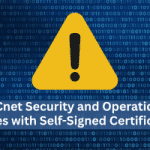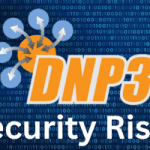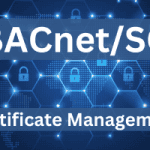Authentication
BACnet Security and Operational Issues with Self-Signed Certificates
Key Points Security Risks Without Trusted Validation: Self-signed certificates lack third-party verification and a root of trust, making BACnet/SC systems vulnerable to spoofing, impersonation, and man-in-the-middle (MitM) attacks. Operational Complexity and Inefficiency: Managing self-signed certificates is time-consuming and error-prone, requiring manual generation, distribution (e.g., via USB), and renewal—especially problematic in large-scale deployments. Downtime and Renewal…
Read MoreDNP3 Cybersecurity Risks: How to Protect ICS & SCADA Systems
DNP3 Cybersecurity Risks Quick Summary DNP3 is widely used in ICS and SCADA but faces significant security gaps, especially in legacy systems. Common threats include man-in-the-middle attacks, packet manipulation, and master impersonation. Legacy compatibility issues mean many systems still lack encryption and authentication. Mitigation requires strong authentication, encryption, integrity protection, and network segmentation. Zero Trust…
Read MoreImproving BACnet Secure Connect (BACnet/SC) Deployment with Automated Certificate Management
Managing BACnet Secure Connect (BACnet/SC) certificates can be a challenging task, especially for large buildings. Just recently at the AHR Expo 2024, we learned of a project that had over 300 devices and the decision was made to use 10-year certificates due to the multiple days (3-4) of labor needed to deploy BACnet/SC certificates. The…
Read MoreAutomotive Opportunity and Security Challenges for Silicon Companies
SecureRF recently participated as an exhibitor at the GSA Silicon Summit, held April 19 in San Jose, California. The event offered attendees a great opportunity to connect with many of the leading and emerging players in the semiconductor ecosystem and also learn about new trends in the industry. While a number of interesting topics were…
Read MoreOn the Path to a Secure Boot Solution for RISC-V
As the RISC-V ISA gains in popularity and more industries proceed with plans to build and deploy systems based on RISC-V technologies, the security requirements of those systems will grow. One avenue that hackers have used to exploit systems has been to modify the firmware and cause it to misbehave. For example, one of the…
Read MoreBloomberg: Most Connected Devices are Easy to Hack. This Company Says it Can Fix That.
Most smart, connected devices are often easy to hack because they have low-power, low-resource processors, making current methods of security impractical or impossible. As a result, these devices, and the networks they are connected to, are vulnerable to attack. SecureRF has an answer–its solutions are aimed specifically at protecting the low-power processors that run internet-connected appliances and other…
Read MoreNIST Accepts SecureRF’s WalnutDSA for Evaluation
SecureRF’s Walnut Digital Signature Algorithm (WalnutDSA) has been accepted by the National Institute of Standards and Technology (NIST) for evaluation as a standard for post-quantum, public-key cryptography. NIST expects to perform multiple rounds of evaluation over a period of three to five years on all of the methods submitted. WalnutDSA is a fast, easy-to-implement, low-energy solution…
Read MoreBeware the Holiday Hack
Most online 2017 holiday gift guides have one thing in common: IoT gadgets. Wi-Fi video doorbells, wearable health monitors, phone-controlled toy robots, and “smart” ovens are just a few of the thousands of Internet-connected products being offered this holiday season. Such gifts might seem like safe products to give or receive, but reports about recent…
Read MoreSecureRF Wins ARM TechCon Innovation Award
SecureRF was recognized Wednesday with the Best Contribution to IoT Security award at this year’s ARM TechCon in Santa Clara, CA. The company impressed the judges with two of its public-key security solutions, Ironwood™ Key Agreement Protocol (Ironwood KAP™) and Walnut Digital Signature Algorithm (WalnutDSA™), which are quantum-resistant security solutions for low-resource processors and embedded devices. Engineers…
Read MoreAsk SecureRF: AES for Authentication?
Question: AES is used successfully all the time. Why shouldn’t we use AES for authentication? SecureRF: AES is a range of symmetric encryption mechanisms widely available on many devices—for free. You can use AES to authenticate a device, but it typically requires the connection to a database or network and lot of other processing that…
Read More


